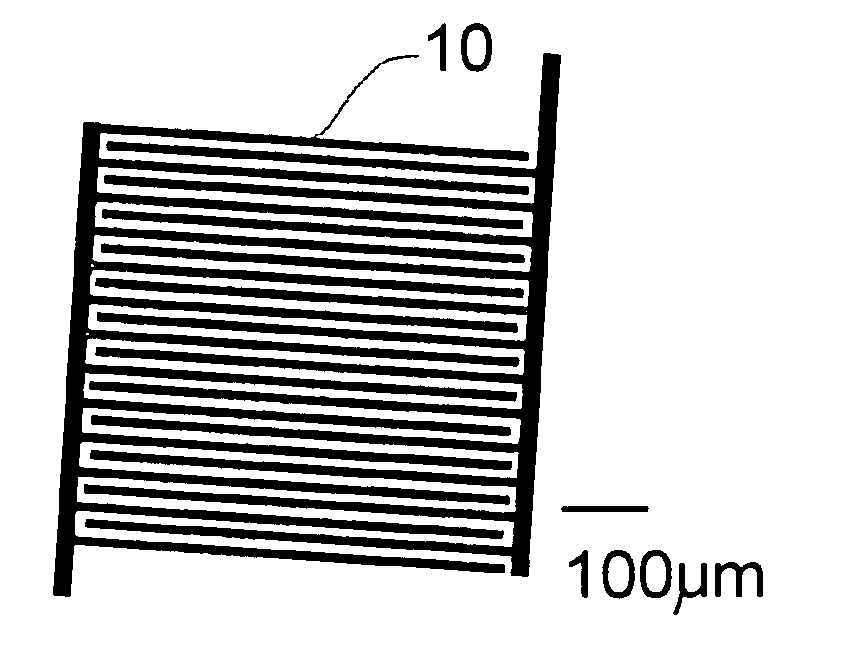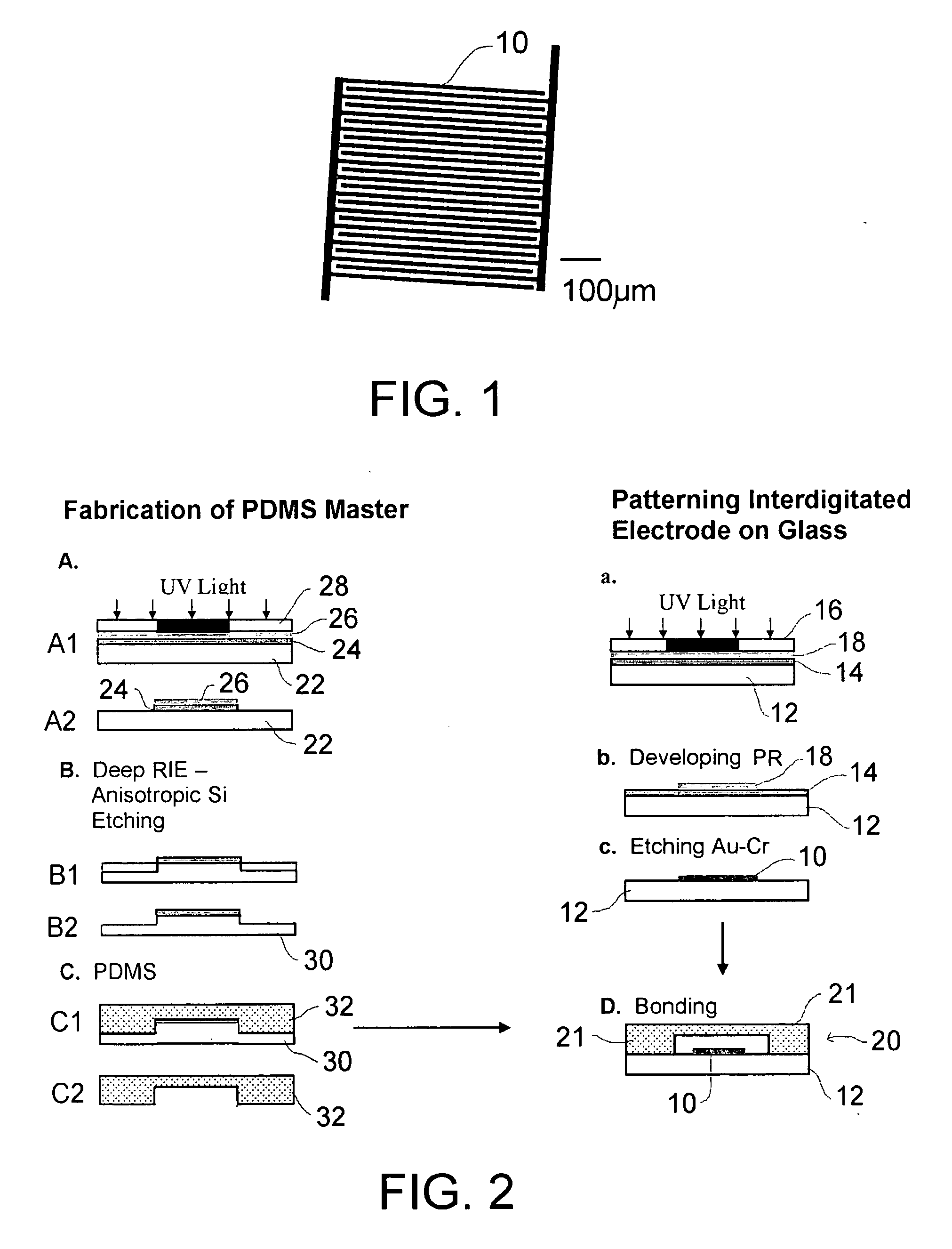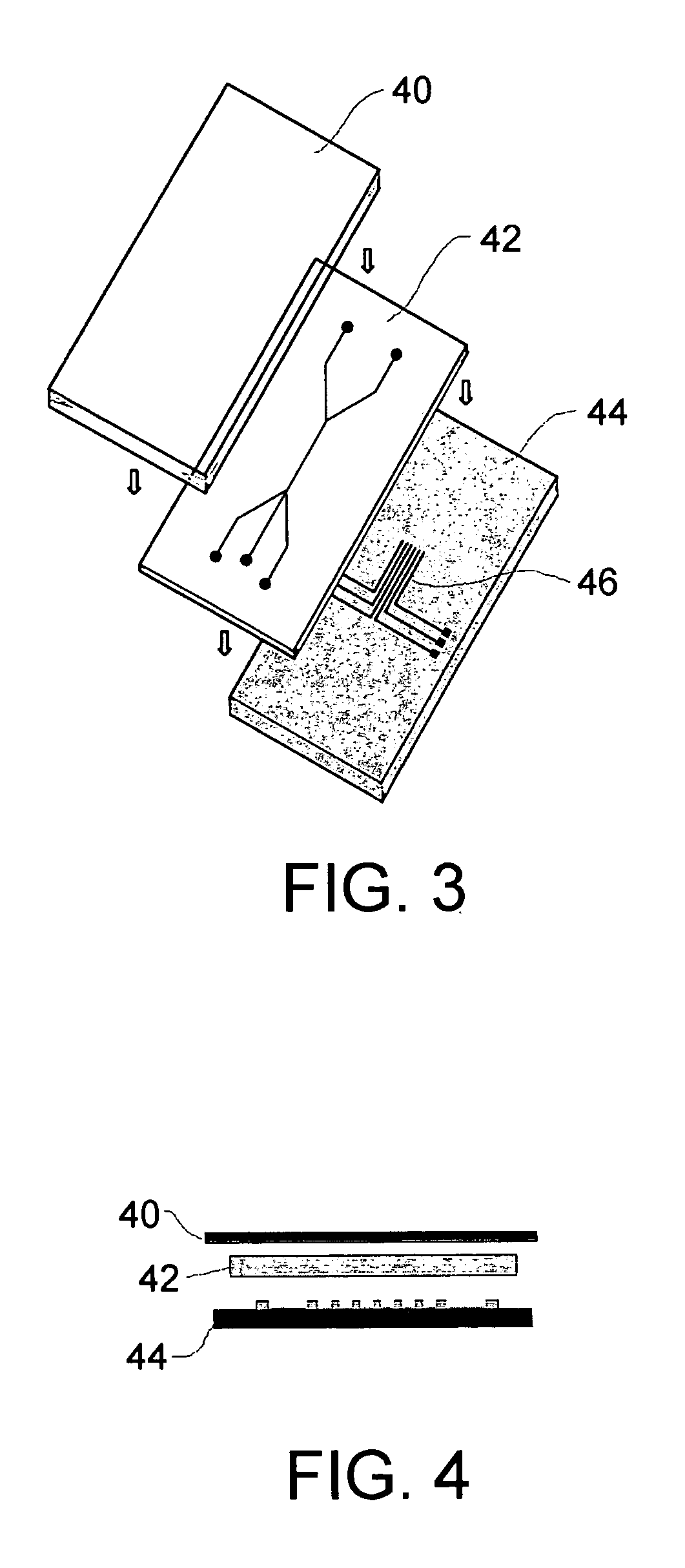Microfluidic device with electrode structures
a microfluidic device and electrode technology, applied in the direction of microstructural technology, diaphragms, electrodes, etc., to achieve the effect of identifying the ‘fingerprints’ of the electrodes and precise shaping of the electric fields
- Summary
- Abstract
- Description
- Claims
- Application Information
AI Technical Summary
Benefits of technology
Problems solved by technology
Method used
Image
Examples
Embodiment Construction
[0022] In this patent document, “comprising” is used in its inclusive sense and does not exclude other elements being present. In addition, the use of the indefinite article “a” before an element does not exclude others of that element being present. The electrodes referred to in this patent document are typically planar microelectrodes, where the term “micro” refers to features that are measured in microns, for example in the order of 10-200 microns.
[0023] Dielectric particles, such as intact biological cells, are electrically polarized when subjected to an alternating electric (A.C.) field. If this field is furthermore inhomogeneous, then the cells will experience a dielectrophoretic (DEP) force [5] that can act to convey them toward strong or weak field regions, depending on the dielectric polarization of the cell and that of the suspending medium [6,7,13].
[0024] The time averaged DEP force DEP> exerted by a non-uniform field of peak strength E acting on a homogenous spherical ...
PUM
| Property | Measurement | Unit |
|---|---|---|
| thickness | aaaaa | aaaaa |
| thickness | aaaaa | aaaaa |
| width | aaaaa | aaaaa |
Abstract
Description
Claims
Application Information
 Login to View More
Login to View More - R&D
- Intellectual Property
- Life Sciences
- Materials
- Tech Scout
- Unparalleled Data Quality
- Higher Quality Content
- 60% Fewer Hallucinations
Browse by: Latest US Patents, China's latest patents, Technical Efficacy Thesaurus, Application Domain, Technology Topic, Popular Technical Reports.
© 2025 PatSnap. All rights reserved.Legal|Privacy policy|Modern Slavery Act Transparency Statement|Sitemap|About US| Contact US: help@patsnap.com



